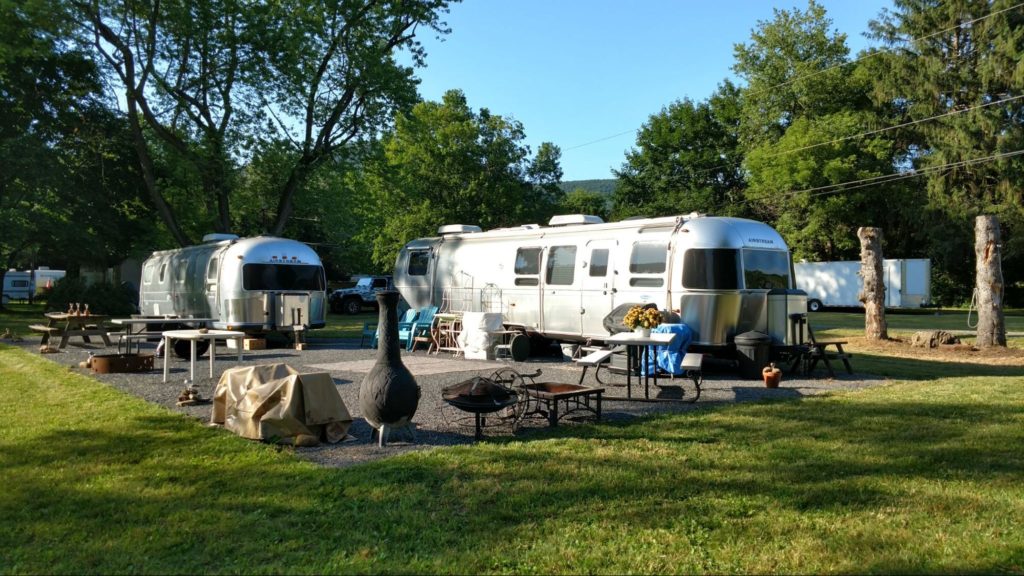
An RV park can be a profitable venture if you play your cards right. The main determining factor in how successful your RV park is, is how it’s designed. RV park design encompasses a lot of things, from location to parking pad dimensions, weather, adherence to regulatory codes, cost, upkeep, amenities, and more.
5 Features to Assess when Designing a Modern RV Park
The choices you make within these categories can be the difference between your RV park being an attractive destination for RV owners or not. If you’re in charge of designing an RV park, let’s take a look at how you can optimize it to be as successful as possible:
1. Follow Regulatory Codes
The regulatory codes governing things like sewer and water services, garbage collection, stormwater drainage, traffic circulation, electricity, and development densities are all going to depend on where your RV park is located. You need to make sure that you are well within regulation as it pertains to each of these categories when designing an RV park
Failing to do so is actually somewhat common among smaller RV parks and can lead to fines or even the closure of your park. So, making sure your RV park is fit to stay open by following your local regulatory codes should be first and foremost on your mind during design.
2. Layout

The RV park design layout will have a direct impact on how attractive it is to RV owners. Parking pad design plays a big role in a successful park. Each RV parking pad should be at least 20 ft. by 50 ft. and be accompanied by an adjacent camping pad of at least 20 ft. by 20 ft. These dimensions are generally big enough to hold an RV, a second vehicle, a picnic table, a grill, and a fire ring or pit.
The RV parking pad needs to be as level as possible with no more than a 4-inch variation in height across the pad. Many RV’s use RV jacks to level the RV after it has been parked anyway, but a pad with too much tilt to it can cause the RV jack to lift one or more tires off the ground, which is not suitable for proper stability. Not having a level pad can cause structural issues to the frame of an RV and you do not want your park to have a reputation for ruining the frames of the RVs that park there.
There are a few different types of parking spaces you can use in an RV park layout design. Back-ins are designed for the RV to back in and have the front facing towards the road. They save the most space and are the most common type of parking spot. These spots need the electrical and water hookups on the driver’s side of the parking space because that’s where the hookups are located on most RVs.

Pull-thru spaces are open-ended and can be backed into or pulled into. They are the easiest to navigate but take up the most space. Pull-ins are designed to be pulled right into, with the front of the RV generally facing towards some sort of scenic view.
RV parking spaces and the entire park, in general, should be free from low-hanging limbs, rocks, roots, and other debris that can obstruct the unimpeded flow of traffic through the park.
The roads throughout your RV park should be at least 20 ft. wide with a 6 ft. lane for pedestrians next to them. This type of lane can function as a one-way road or a two-way road in case of emergencies.
3. Amenities

Some of the best RV park design ideas for amenities are things like Wi-fi, restrooms, showers, and other things to set your park apart from other parks and incentivize RV owners to choose your park. Swimming pools, tennis courts, basketball courts, bingo halls, nature trails, and wildlife preserves are some of the most common and desirable amenities you can add to your RV park.
4. Location

The location of your park will also play a big factor in your success. People like to stay at RV parks for extended periods of time so the local nightlife and attractions will have an impact on your park’s appeal. Weather is a significant factor as well, seeing as how most RV owners are looking for warm weather in the winter.
Views are big too. Having great views at your park can help it stand out and attract more campers even if you aren’t near a popular urban area or a beach. Mountainside views are known to be popular among RV owners.
5. Paving
Paving can be one aspect of your park that sets you apart and attracts RV owners if you do it right. Typical asphalt is usually fine for the roads, but you want permeable plastic pavers for your RV parking spaces.
TRUEGRID PRO LITE and TRUEGRID PRO PLUS pavers, for example, can be used to create completely permeable spaces that last for up to 60 years with minimal maintenance required. This will help you drive down maintenance costs while providing level, durable, natural looking, and permeable spaces for your residents.
TRUEGRID Pavers Are the Best Paving Option for Your RV Park

The best way to pave your RV parking spots so that they are as permeable, durable, cost-effective, long-lasting, and eco-friendly as possible is to use TRUEGRID permeable pavers to lock gravel in place and provide a level surface for parking and driving. If you want the best permeable paving option, contact TRUEGRID today for a free quote.



